You can trust Cyclingnews
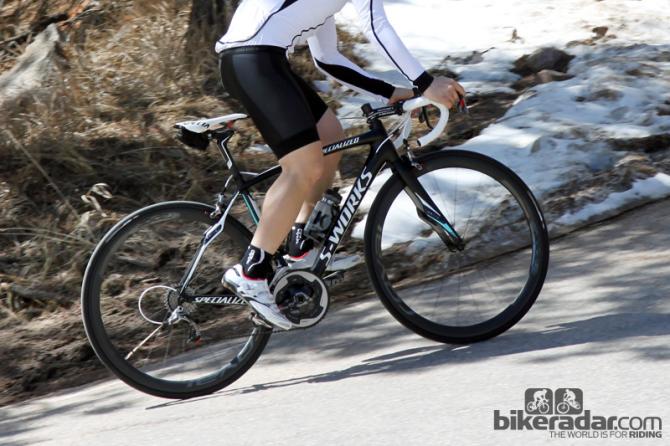
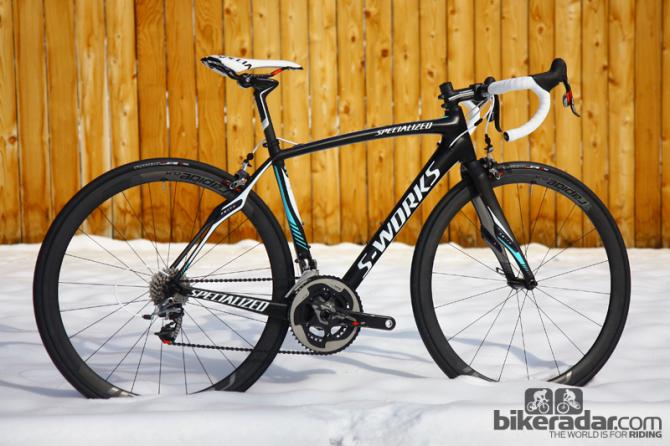
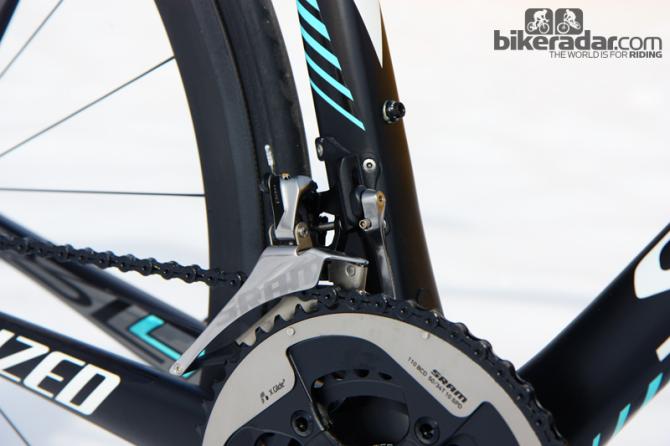
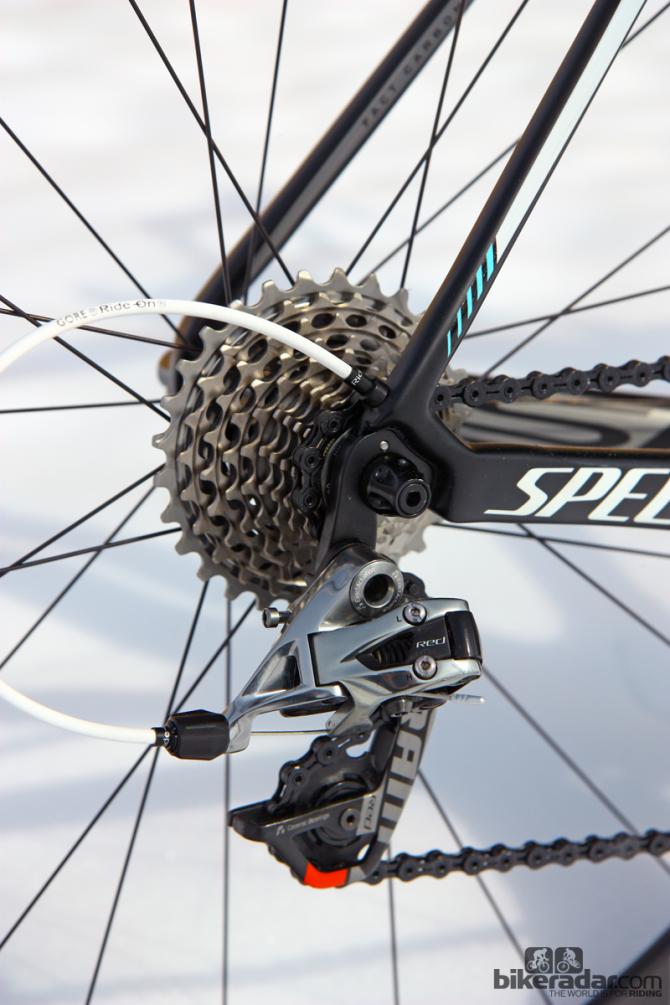
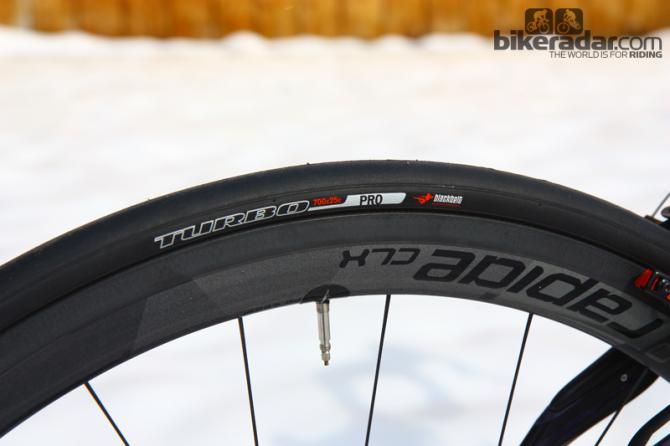
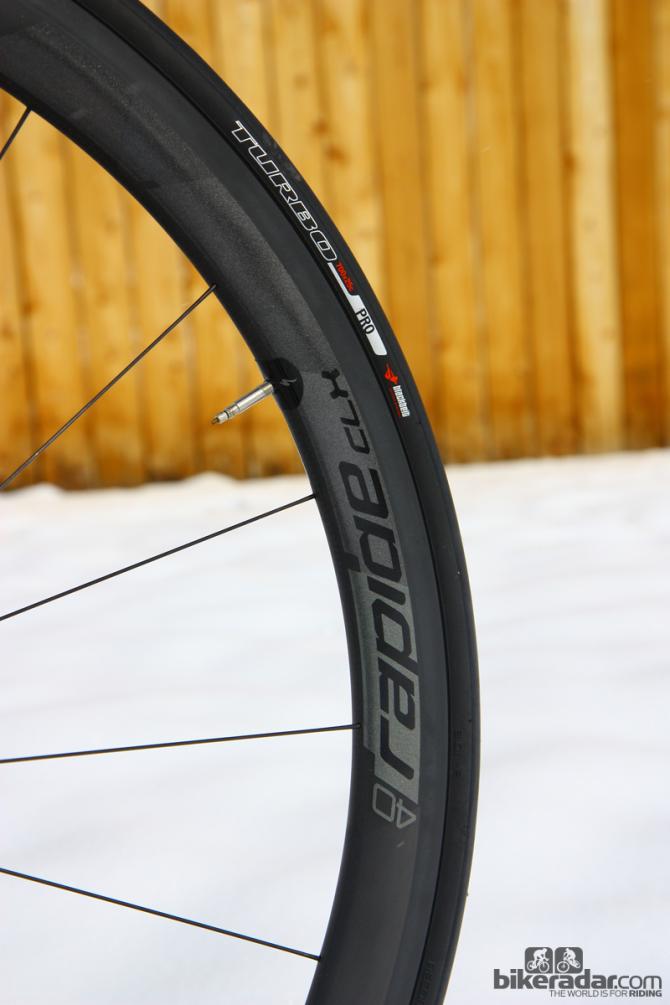
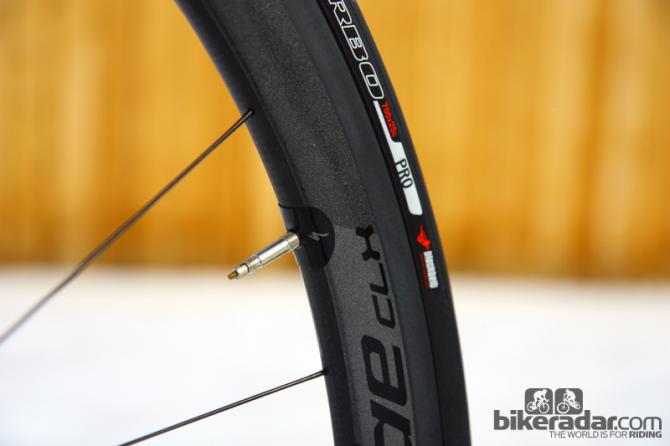
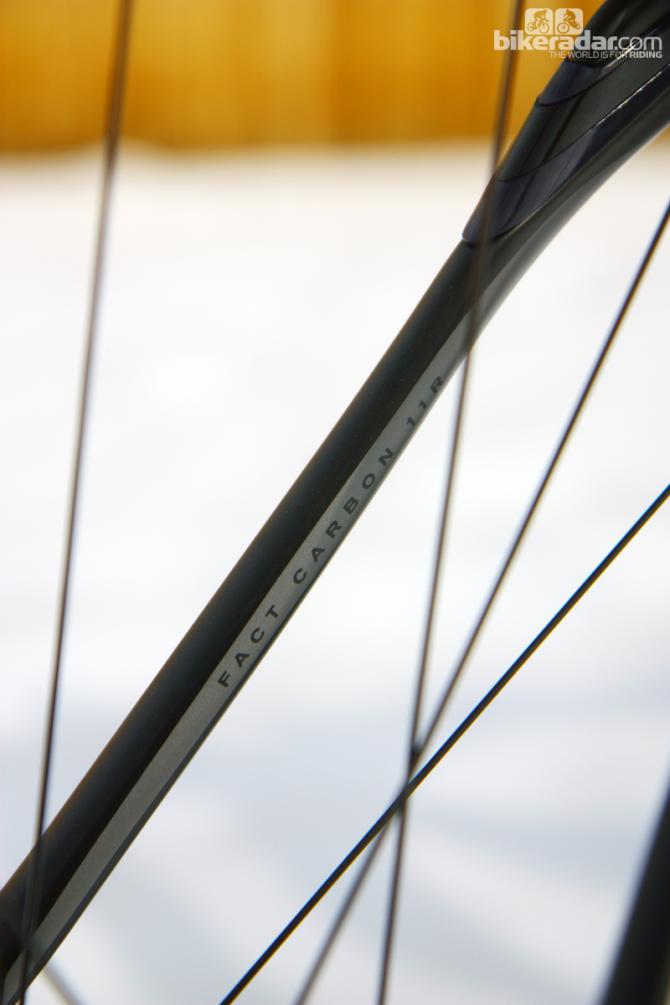
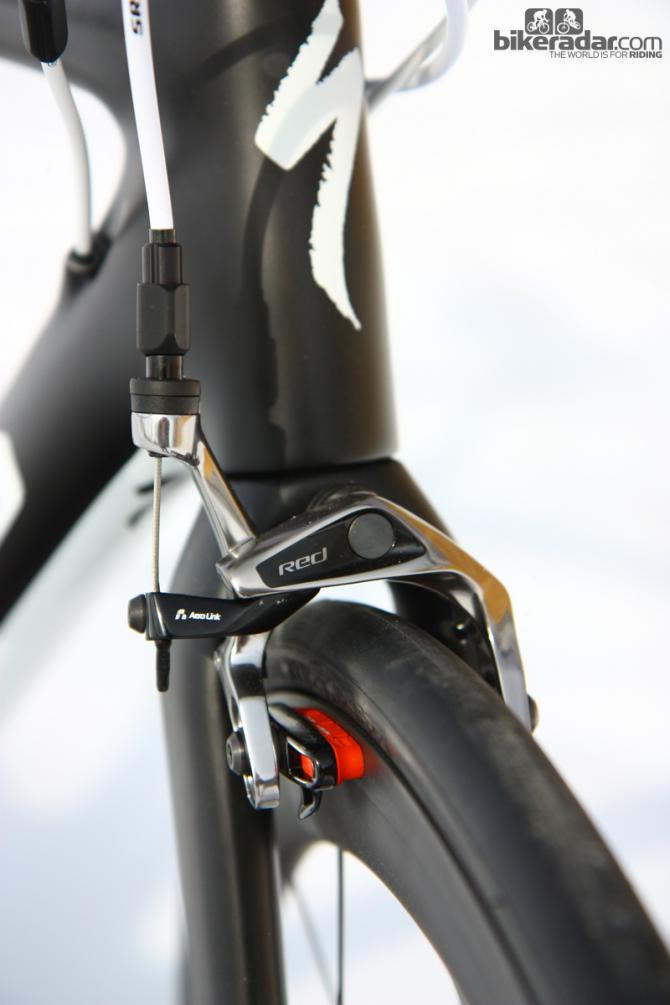
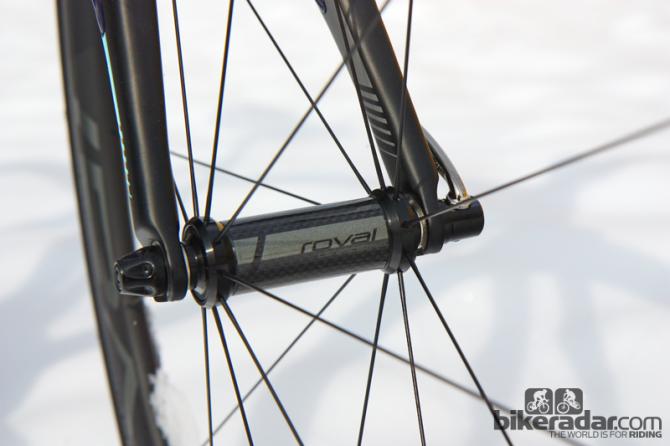
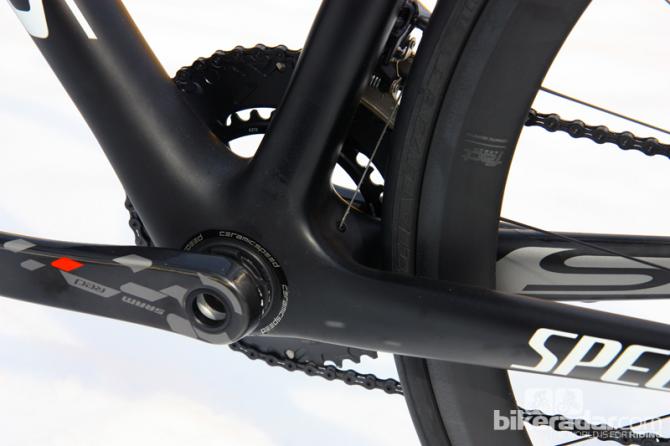
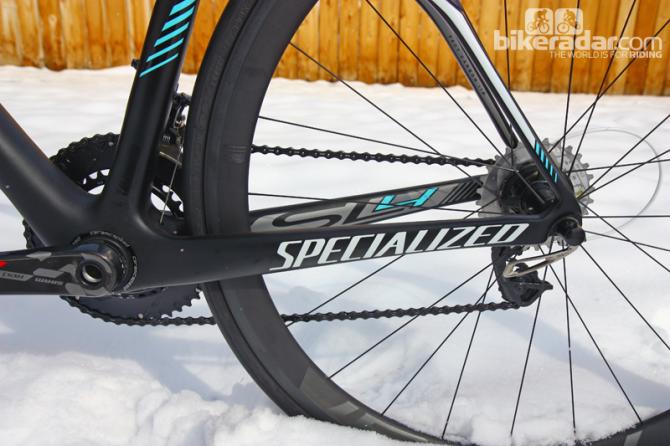
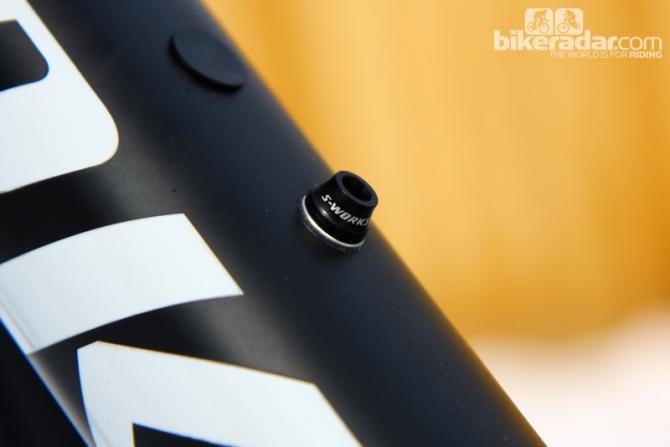
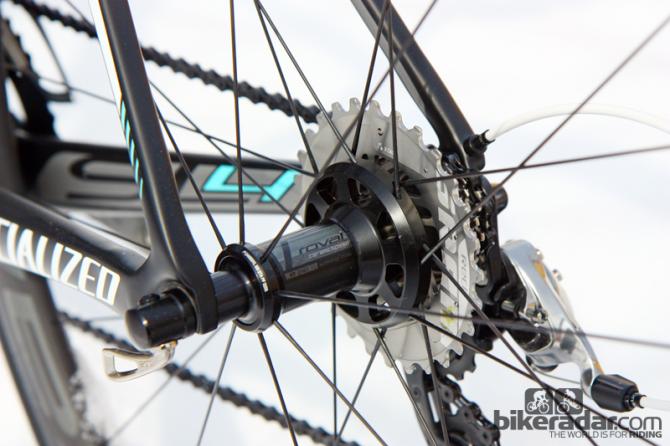
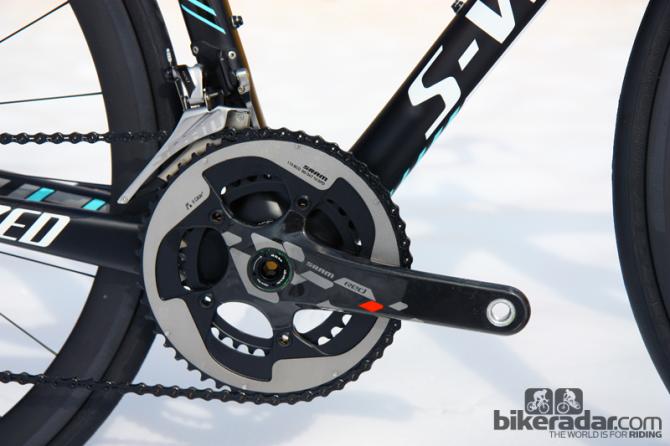
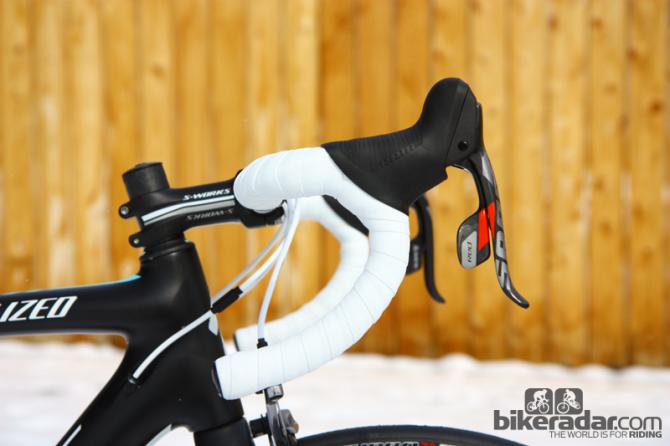
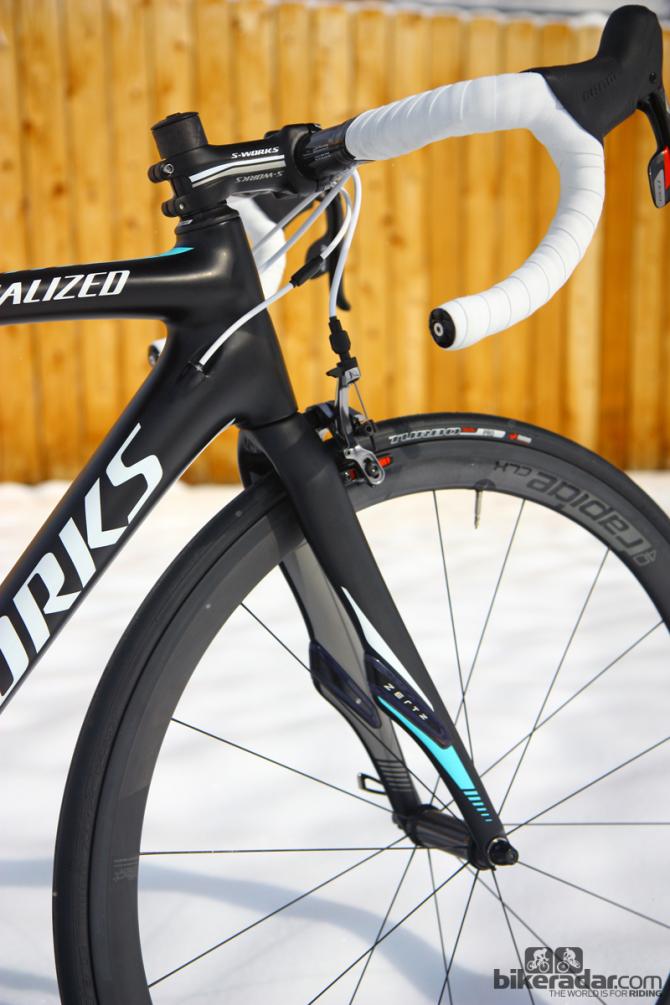
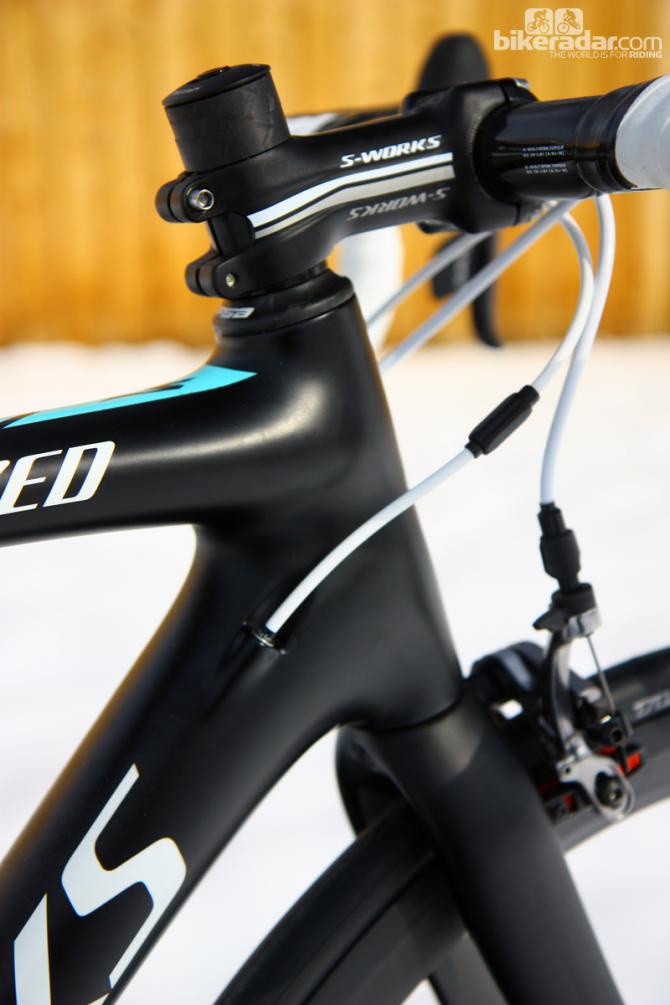
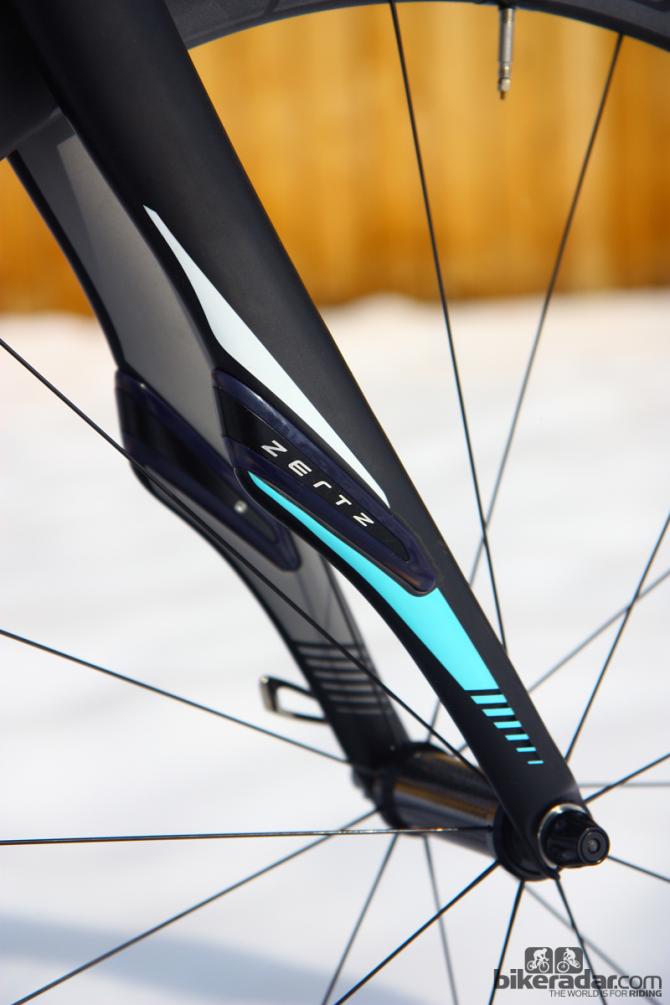
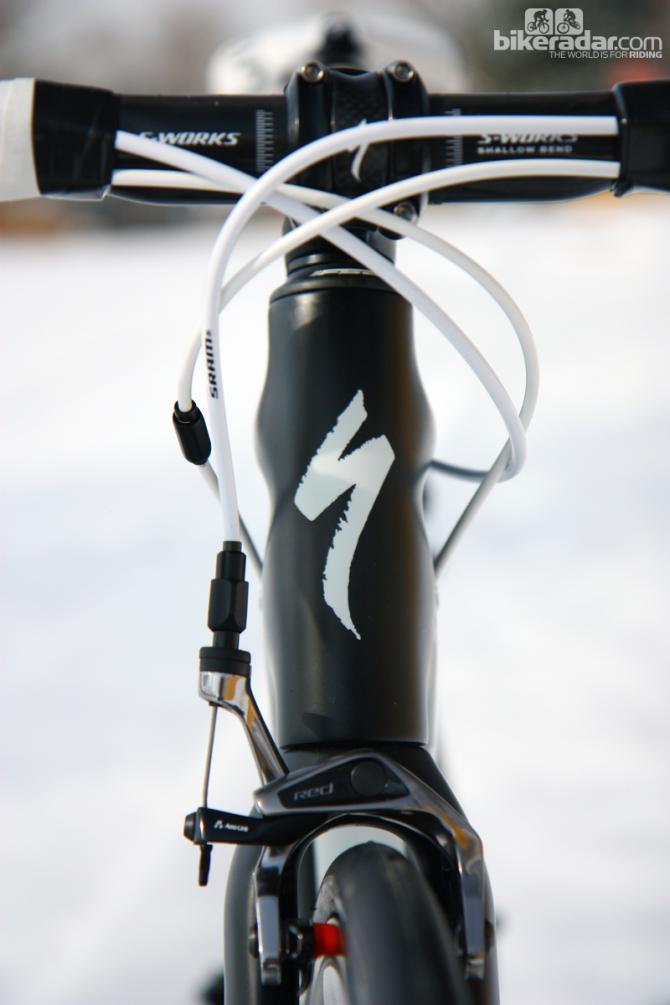
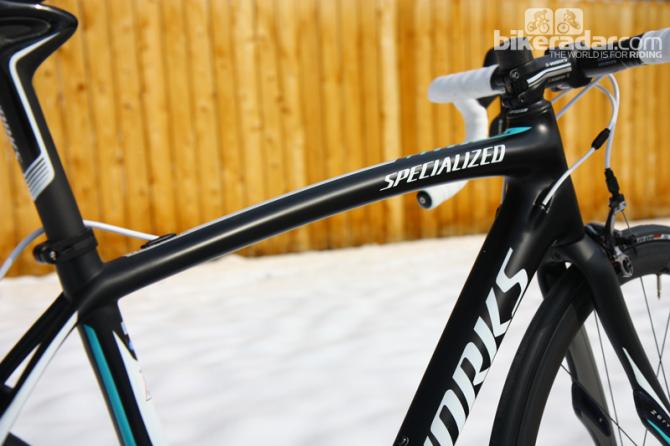
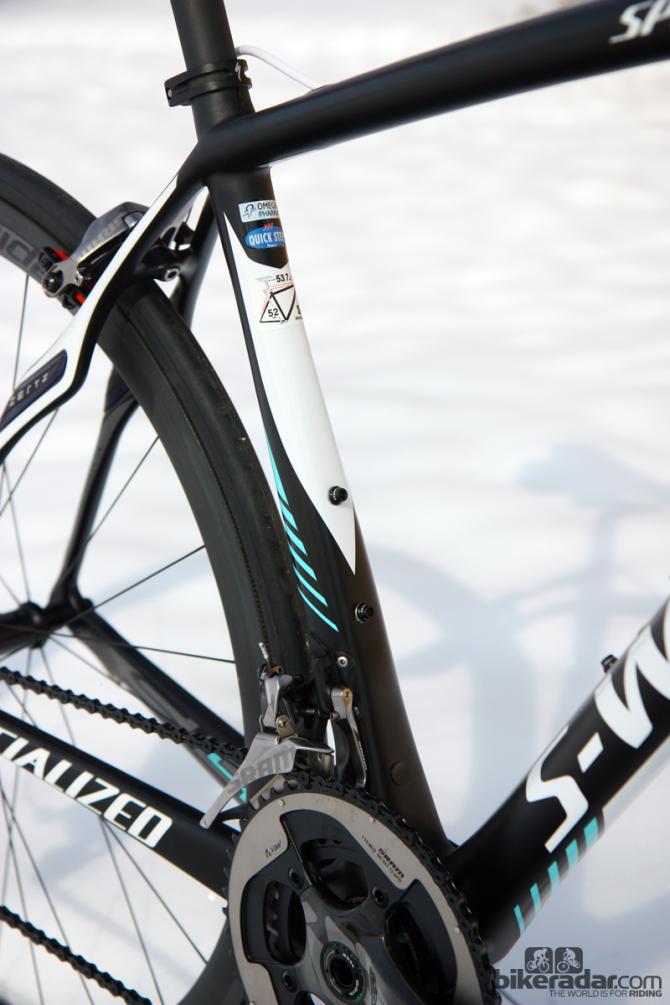
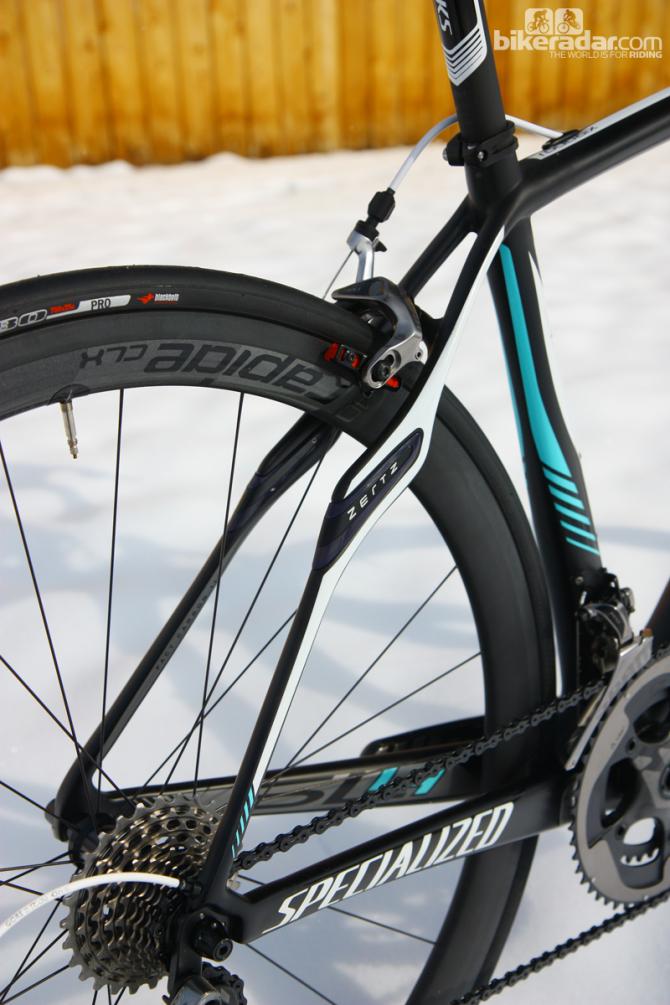
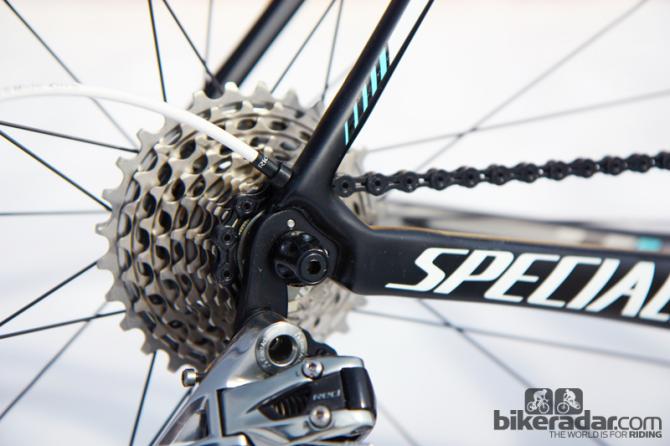
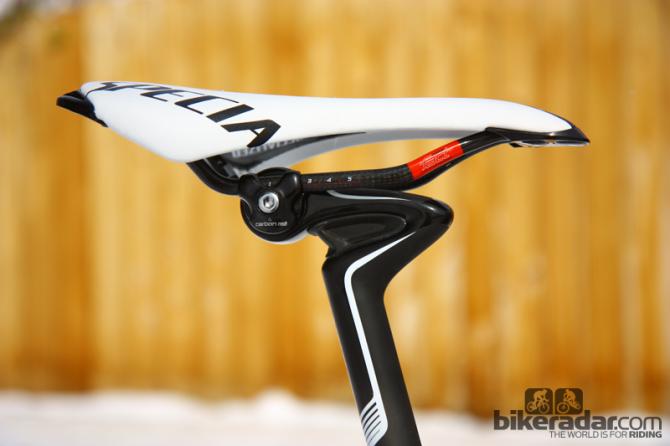
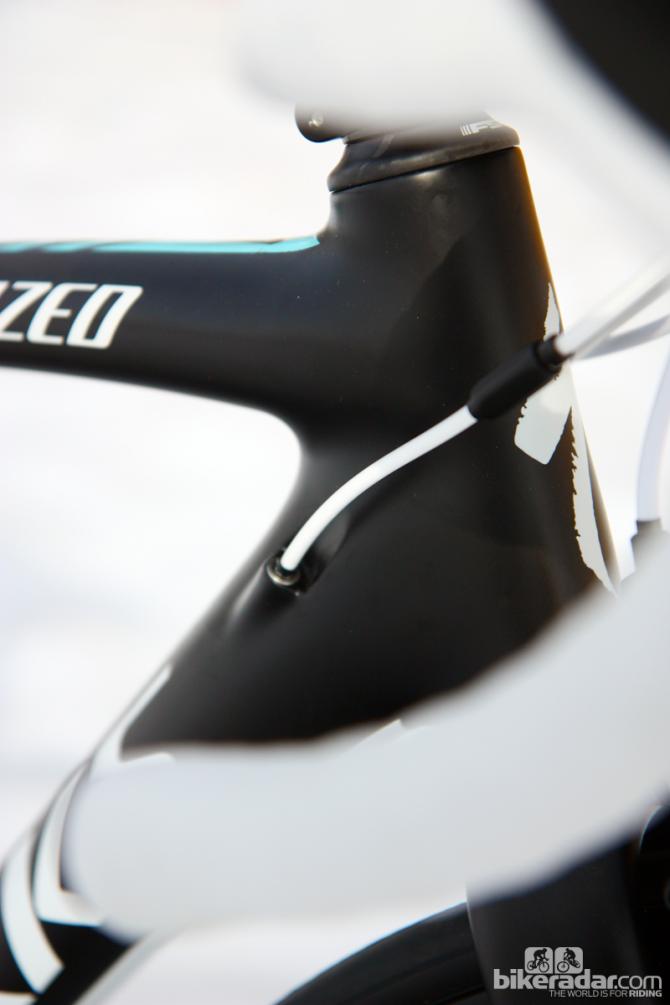
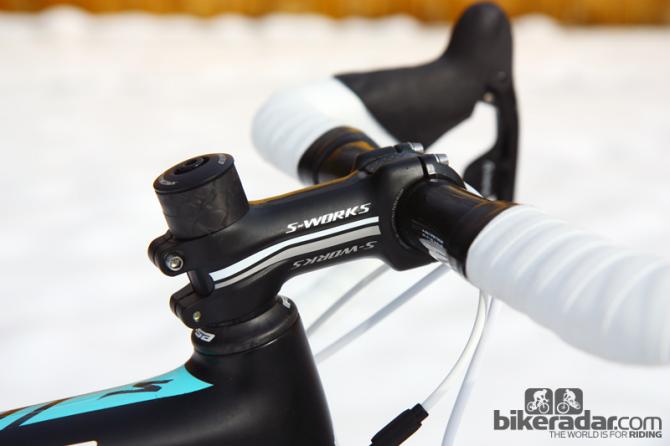
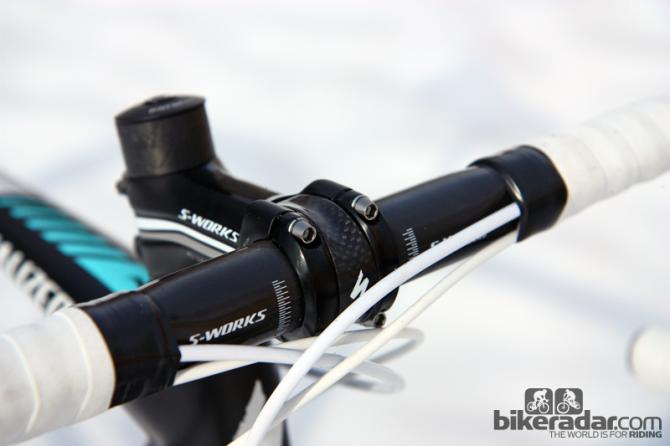
This article was originally published on BikeRadar
Set aside your notions of the Specialized S-Works Roubaix SL4 being some cushy doctor/lawyer machine. While the geometry and positioning says "endurance bike", the rest of the bike screams "race me", with a rigid backbone, an impressively low weight, and a ride quality that's likely firmer than you expect – for better or worse.
Ride & handling: Smooth yet firm
Specialized has hardened up its flagship Roubaix considerably for this year, setting aside its previous Barcalounger-like glide in favor of one that's surprisingly two-faced. On the one hand, it utterly erases any hint of road texture or buzz and feels more like you're riding an air hockey puck made of butter on a red-hot table.
Seriously, on even moderately good pavement this thing is smooth. If vibration was like a field of greens, this new Roubaix is like some guy with a machete who's hopped up on caffeine and speed.
Yet for all the bike's remarkable ability to gloss over smaller imperfections, the frame is much harsher on washboarded dirt roads, potholes, and frost heave than previous Roubaix iterations.
In some ways, the unusual COBL GOBL-R seatpost picks up where the frame leaves off and does a much better job out back than we expected with bigger impacts. But, unfortunately, there's no corresponding aid up front. It's almost as though that air hockey puck made of butter is gliding across the table only to be violently whacked right back at you.
Mind you, this seemingly disjointed ride quality isn't necessarily a bad thing, depending on your wants and needs. The trade-off for that firmer ride is a far sharper personality than before in terms of pedaling responsiveness and handling precision.
Unfortunately, we don't have independent numbers to support this but after spending an appreciable amount of time on Specialized's Tarmac SL4 last year, we'd dare say that this Roubaix gives up nothing in terms of efficiency (and a recent conversation we had with Omega Pharma-QuickStep rider Sylvain Chavanel seems to back up this assertion).
Mash the pedals and there's a greater sense of urgency than there has been with previous Roubaix models, especially when you're attacking steep grades or sprinting for a sign. Likewise, there's almost no perceptible give when torqueing on the bar, and high-speed handling is utterly predictable, with minimal twist front-to-back as you snake through corners.
As with previous Roubaix chassis, handling tends towards the stable end of the spectrum as opposed to the more point-and-shoot nature of the Tarmac. Crit racers might find the Roubaix SL4 to be a little too lazy for their liking, but most people will probably have few complaints with such rock solid high-speed stability.
What's indisputable, though, is that this sucker is light. Total weight for our 52cm sample without pedals is just 6.41kg (14.13lb).
Frame: More 'Tarmac with Zertz' than classic Roubaix
Visually speaking, there's little to hint at the new carbon fiber Roubaix SL4's firmer ride, as it's a distinctly evolutionary progression from the previous SL3 version.
Distinctive features include the way the humongous down tube and top tube effectively wrap around the head tube to promote front-end stiffness, the tapered seat tube that morphs from round up top to rectangular down at the OSBB (Specialized's version of PF30) bottom bracket shell, and the now-trademark curved and flattened 'cobra' top tube.
One key feature borrowed from the Tarmac range is the new one-piece bottom bracket and asymmetric chain stay assembly, which supposedly boosts drivetrain efficiency under power.
The seat stays are straighter and offset further from the centerline of the seat tube up top, too, which Specialized claims further increases rear-end stiffness – to the tune of nearly 20 percent compared to the SL3 if you believe company claims.
Many brands vary tubing sizes and shapes according to frame size, but Specialized has gone one step further with the Roubaix SL4 by varying the lower steerer tube diameter as well, to help maintain the same ride quality across the range: 1 1/8in for 49-52cm sizes, 1 1/4in for 54-56cm, and 1 1/2in for 58-61cm. All sizes get a standard 1 1/8in diameter up top.
Other features include well executed internal cable routing that's convertible for mechanical or electronic drivetrains, molded-in bearing seats for the integrated headsets, a carbon fiber sleeve for the press-fit bottom bracket cups, and hollow carbon fiber dropouts.
Tire clearance is refreshingly generous. The stock 25mm-wide Specialized Turbo Pro clinchers actually measure closer to 26mm across, and 28mm ones fit easily.
Actual weight for our 52cm frame is 961g including the seatpost collar, rear derailleur hanger, and anodized aluminum water bottle bolts – just 40g heavier than the similarly sized S-Works Tarmac SL4 we tested last year. The matching 390g fork tacks on a more significant 80g weight penalty but, even so, they're impressive numbers.
Equipment: Wide-range gearing and lots of lightweight bits but so-so brake performance
Specialized offers not just one but two top-end S-Works Roubaix SL4 variants: the monumentally expensive US$12,000/£8,500 Roubaix SL4 Di2 Compact with Shimano's latest Dura-Ace electronic group and the somewhat more reasonable US$8,000 Roubaix SL4 Red Compact with a SRAM Red 2012 group, which we've tested here (UK markets get a Dura-Ace mechanical build option for £6,500).
In addition to the SRAM Red 2012 group (which includes the company's BB30 crankset instead of Specialized's own FACT carbon cranks), nearly every other line on the spec sheet is filled in from the Specialized corporate parts bin: Roval Rapide CLX 40 carbon clincher wheels, 25mm-wide Turbo Pro tires, a compact bend carbon fiber handlebar clamped in an adjustable-angle forged aluminum stem, the aforementioned COBL GOBL-R carbon seatpost, and a cushy Body Geometry Toupe RBX Pro saddle with carbon rails.
We've already tested the SRAM Red 2012 group extensively, so there were no surprises there. The drivetrain shifts precisely and reliably under power, and it runs much more quietly than previous iterations. The impressively accommodating stock gearing is 50/34T up front and a mountain taming 11-28T out back.
Specialized swaps out the usual SRAM chain for a KMC X10SL that's visually augmented with a black DLC (diamond-like carbon) coating. It runs quietly and shifts well but after a couple of months of steady use, including a few wet and nasty rides on local dirt roads, the snazzy finish is already starting to wear.
Previous experience on SRAM's latest linkage-enhanced single-pivot rim brake calipers has shown them to generate heaps of power, with very good lever feel and modulation. In this instance, however, braking performance from the Roval Rapide CLX 40's carbon sidewalls and the included carbon-specific pads (made for Specialized by SwissStop) was more inconsistent.
Braking performance in dry conditions with freshly surfaced pads is about average as far as carbon rims go, with passable initial bite but a very progressive build-up in power the further back you pull the lever.
That performance degrades tremendously when the pads are even somewhat dirty or glazed, however – which doesn't seem to take long. In one instance, our hands actually started to cramp towards the bottom of a sketchy 300m (1,000ft) dirt road descent with lots of loose switchbacks. Needless to say, things don't improve when the rims are wet.
Specialized contracts these pads from SwissStop, whose carbon-specific pads we've generally found to be among the best available in the past. In fairness, sanding down the glaze and grime restores braking performance normal, but even then it's never as good as other setups we've used, such as SwissStop's benchmark Yellow King pad.
"The red pads have been like a red version of Yellow King but with a bit less power which came with the color change," said Christian Heule of SwissStop.
That said, he also told BikeRadar that Specialized has already discontinued the red pads in favor of the company's far more capable Black Prince carbon-specific compound.
Otherwise, the rolling stock fares quite well. The wheels are notably light at just under 1,400g (claimed), they spin exceptionally well on the stock CeramicSpeed bearings, the well-damped ride is a good match for the chassis, they're reasonably stable in crosswinds, and the internal-cam skewers generate heaps of clamp force. The Turbo Pro tyre's supple casing rides smoothly, too, and its round profile is predictable in corners, with a gently progressive turn-in.
Hidden nipples on the rims will slow down any required truing, however, and we feel this type of bike could certainly benefit from an internal rim width greater than the 16.2mm used here.
Otherwise, the rest of the Specialized bits passed with flying colors. We found the densely padded saddle very comfortable for long days in the saddle, and while fitter riders might prefer a handlebar with more drop, the compact bend one used here is comfortable and well shaped.
Despite having an extra shim included to provide the angle adjustment, the forged aluminum stem is solid and creak free, too.
Switch-hitter
Given such disparate performance characteristics, the question becomes a matter of whom Specialized has built this thing for.
Enthusiast riders who want a premium rig for comfortable long-distance cruising might very well want something with a more progressive ride quality. Racers, on the other hand, will enjoy getting to the finish line feeling a little less beat-up on more poorly maintained courses, but might take issue with the higher stack height and more leisurely handling (we had to use a -17-degree stem to replicate our typical, not-super-aggressive position).
Specialized marketing man Chris Riekert puts it this way:
"I think for years the idea of a comfort bike being laterally stiff enough to race was absurd. The best way to make an endurance bike better is to make it faster. The new SL4 provides the exact same amount of deflection as the Roubaix SL3 but is a substantial amount more laterally stiff.
"In my experience on the bike, there is a perception that the SL4 is stiffer on large impacts because the frame is only allowed to bend in a vertical path, whereas the SL3 could soak up some of the hit in lateral movement. That is a large reason why we pushed so hard for the system of the sharper SL4 frame paired with the COBL GOBL-R to deal with large impacts."
Riekert doesn't necessarily dispute our findings on the bike, but poses the question in this manner: "Is the best endurance a) the softest ride or b) the best blend of comfort and performance?"
We can't answer that question for you, but on more than one occasion we climbed off this thing wondering what it would be like with fast-rolling, 28mm-wide open tubular tires (which would largely offset the frame's curious ride quality), a slightly shorter head tube (do aggressive positioning and comfort have to be mutually exclusive?), and the option of hydraulic disc brakes – all of which we're estimating would add about half a kilo but mind-blowing versatility. We're allowed to dream, right?
Price: US$8,000
Weight: 6.41kg (14.13lb, complete bike, as tested, without pedals); 961g (frame only, with rear derailleur hanger, seatpost collar, and water bottle bolts); 390g (fork only, without compression plug)
Pros: Fantastic vibration damping, race bike-like reflexes, ultralight weight
Cons: Surprisingly harsh ride on medium-to-large bumps, inconsistent braking performance
Cyclingnews verdict: 4 stars
More information: www.specialized.com
Complete bicycle specifications
Frame: Specialized S-Works Roubaix FACT 11r carbon
Available sizes: 49, 52 (tested), 54, 56, 58, 61cm
Fork: Specialized S-Works Roubaix, 1 1/8" upper and size-specific (1 1/8", 1 1/4", or 1 3/8") lower steerer diameter
Headset: FSA Orbit IS
Stem: Specialized S-Works Pro-Set
Handlebars: Specialized S-Works SL carbon, shallow drop
Tape/grips: Specialized S-Wrap Roubaix
Front brake: SRAM Red 2012 w/ Roval carbon-specific pads by SwissStop
Rear brake: SRAM Red 2012 w/ Roval carbon-specific pads by SwissStop
Brake levers: SRAM Red 2012 DoubleTap
Front derailleur: SRAM Red 2012
Rear derailleur: SRAM Red 2012
Shift levers: SRAM Red 2012 DoubleTap
Cassette: SRAM XG-1090, 11-28T
Chain: KMC X10SL-DLC/Black
Crankset: SRAM Red 2012 BB30, 50/34T
Bottom bracket: Specialized OSBB by CeramicSpeed
Pedals: n/a
Wheelset: Roval Rapide CLX 40 w/ CeramicSpeed bearings
Front tire: Specialized Turbo Pro, 700x25c
Rear tire: Specialized Turbo Pro, 700x25c
Saddle: Specialized Body Geometry Toupe RBX Pro
Seat post: Specialized COBL GOBL-R